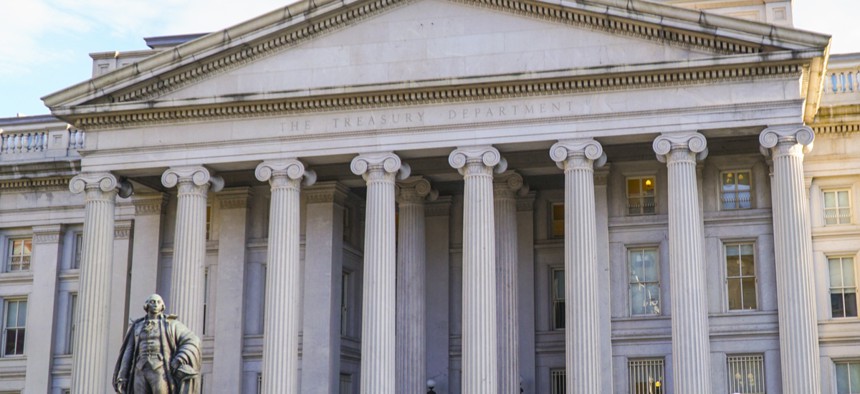Treasury Department, IRS Announce 'Opportunity Zone' Designations

The Treasury Department headquarters in Washington, D.C. Shutterstock

Connecting state and local government leaders
The initial round of zone approvals under the new economic development program covers 15 states and three territories.
An economic development initiative created as part of last year's federal tax overhaul took a significant step forward on Monday as the U.S. Treasury Department and the Internal Revenue Service signed off on "Opportunity Zone" designations in 15 states and three territories.
The Opportunity Zones program provides a tax incentive designed to attract investment to low-income communities. It's meant to encourage private investors to reinvest unrealized capital gains, like profits from stock positions that have not been closed, into special funds used to make investments in the zones.
Governors had a March 21 deadline to either submit nominations for zones within their states or request a 30-day time extension—giving them until April 20.
Treasury said in an announcement Monday that they had designated zones in all of the states and territories that had submitted nominations ahead of last month's deadline. The agency said it would make future designations as submissions from states that have requested extensions are received and certified.
Submissions approved Monday were for zones in: American Samoa; Arizona; California; Colorado; Georgia; Idaho; Kentucky; Michigan; Mississippi; Nebraska; New Jersey; Oklahoma; Puerto Rico; South Carolina; South Dakota; Vermont; Virgin Islands; and Wisconsin.
The designated zones throughout those places cover about 3,500 census tracts.
Two Treasury Department spokespeople have repeatedly declined to clarify in recent weeks how many states have requested time extensions to submit zone proposals. They again did not respond to a request for comment about this on Monday.
Amanda Byrd, communications director for Economic Innovation Group, a think tank that is championing Opportunity Zones, said by email that the group had heard anecdotaly that over half of the states across the U.S. had requested extensions to submit zone nominations.
"Given our communications with various stakeholders, we are optimistic that there will be 100% participation by the April 20 extended deadline," Byrd added.
Economic Innovation Group has highlighted estimates showing there are about $6 trillion of unrealized capital gains eligible for reinvestment in Opportunity Zones.
But it's unclear what fraction of this money might flow toward the program, or the specific investments it might go to support—affordable housing, commercial real estate and business expansion are among the possibilities that have been floated.
Treasury and the IRS are working on additional guidance for the funds that will direct investment toward Opportunity Zones.
There's been some scrutiny over the effectiveness of similar programs in the past. And experts have pointed to potential pitfalls with Opportunity Zones, and the importance of zone selection. For now, many open questions remain about how the program will unfold.
A map showing the Opportunity Zone designations can be found here.
Bill Lucia is a Senior Reporter for Government Executive's Route Fifty and is based in Washington, D.C.

NEXT STORY: Key Takeaways From a New Survey of Municipal Bond Analysts





